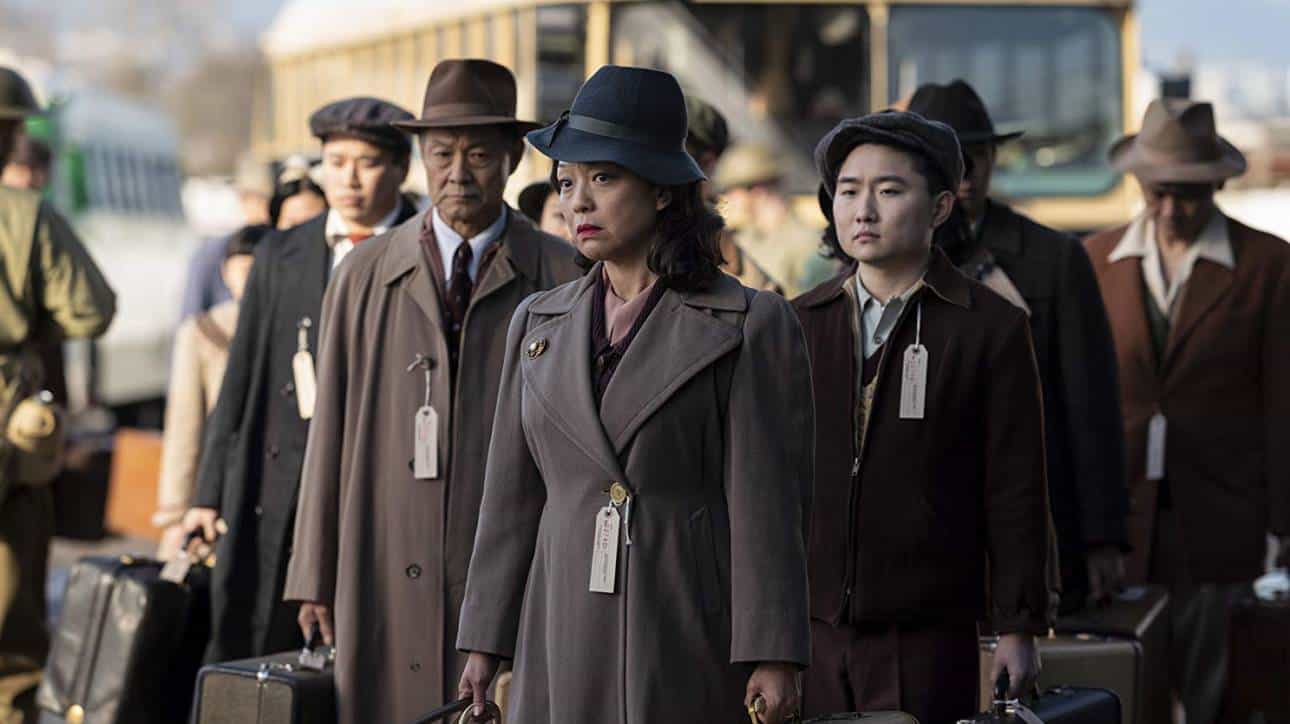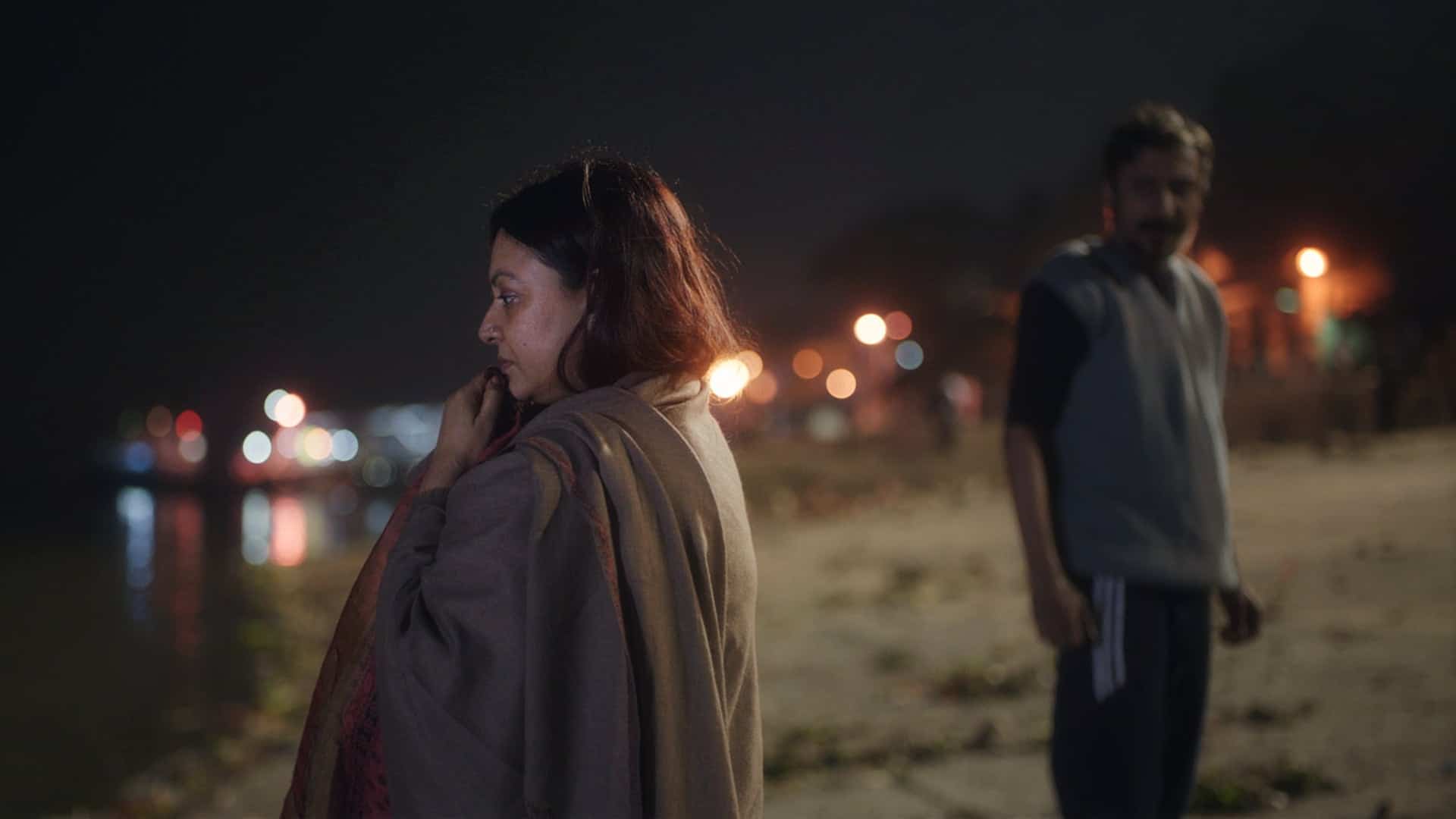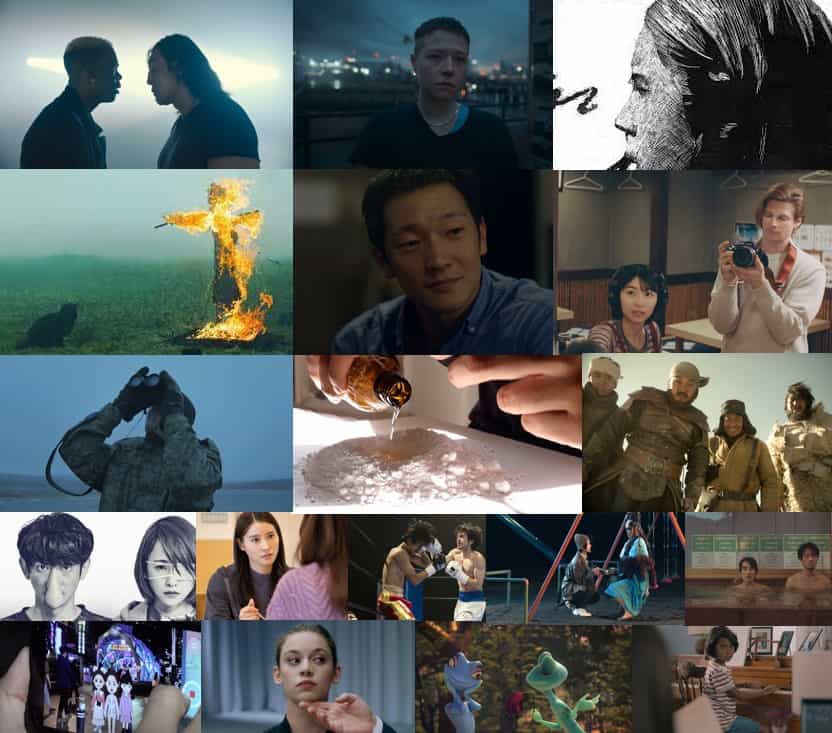by Hiranmoy Lahiri
AMC (‘American Movie Channel') created a unique horror series in 2018 called “The Terror”. It was based on Dan Simmon's bestselling book of the same title, which came out in 2007. The series featured ten episodes in the first season. David Kajganich was the showrunner. It told the tale, using known facts and superlative imagination, of the horrific happenings that took place during the years between 1845 and1848 – concerning Sir John Franklin's doomed Arctic expedition. Two British ships, HMS Erebus and HMS Terror were involved in the journey. They set out to search and explore the Northwest Passage of the Canadian Arctic. The two ships were icebound for more than a year when the expedition was finally abandoned. None of the 128 people aboard the ships survived. The show portrayed nature in its most terrifying form. In addition, a supernatural threat is omnipresent. “The Terror” is a spine-chilling tale of the overreaching ambition of men, and how it can lead to their downfall. The ‘terror' that is portrayed is the result of both supernatural and natural causes.
Buy This Title

One can find the second season of this ten-episode show, “The Terror: Infamy” continuing the same legacy of the first season of “The Terror”. The showrunner is Alexander Woo and the co-creator, Max Borenstein. The title “Infamy”is clearly a reference to the American President Franklin Delano Roosevelt's comment on December 7, 1941, the day on which Pearl Harbor was bombed by the Japanese, labelling it as “a date which will live in infamy.” The script is original, based on Japanese ghost stories, supernatural myths and the real-life horror story that was the ‘Executive Order 9066'. After the attack on Pearl Harbor, a horrible incident by itself, the American administration took the unprecedented step to segregate people of Japanese descent in order to ‘protect' the country. Before the World War II started, the Federal Bureau of Investigation (FBI) had already targeted some people from Germany, Italy, and Japan as potential threats. But after 48 hours of the attack on Pearl Harbor, the FBI rounded up and arrested about 1200 Japanese community leaders from the West Coast, as the authorities considered that part of the country to be particularly vulnerable from the Japanese American population. Lt. General John L. DeWitt (Commander, Western Defense Command) produced fabricated evidence to justify this mass internment; he cited events of sabotage of power lines, which turned out later to be cattle induced damage. He also claimed to have seized “hidden caches of contraband”, most of which were confiscated from legal sporting goods shops. His panic-induced and prejudiced knee-jerk reaction managed to convince President Roosevelt of the ‘military necessity' of the order. Although the original ‘relocation' plan included Germans and Italians as well, the idea was not well received. On February 19, 1942, President Franklin D. Roosevelt signed the Executive Order 9066 – it effectively resulted in the ‘relocation' and incarceration of approximately 120,000 Japanese Americans. Some of them were issei or first-generation Japanese Americans who had emigrated from Japan, but the rest of them (about 70,000 people or so) were nisei/ Japanese Americans who were born in the country and were legal US citizens. All these people became ‘enemy aliens' almost overnight – every man, woman and infant. Some of the German and Italians present in the US were interned too, but the number of the Japanese Americans internees was staggering.
The story of “Infamy” has elements of supernatural horror, the genre of the series being horror. The British-born writer Lafcadio Hearn had translated several ghost stories from Japanese in his lifetime. A collection of those tales was published as “Kwaidan: Stories and Studies of Strange Things” (1904) – it was later adapted by the Japanese director Masaki Kobayashi in 1965 into a film entitled “Kwaidan”. In the Japanese language, the words Kwaidan or Kaidan means ghost stories or supernatural stories. Those who have watched that film will find the tone of the horror elements in this series to be somewhat similar. But what binds the whole story together is the story of the internment of Japanese Americans, it is the soul of the series.

The story revolves around the Nakayama family. Chester Nakayama (played by Derek Mio) is a young nisei who aspires to be a photojournalist. His father Henry (Shingo Usami) and mother Asako (Naoko Mori) had immigrated from Japan to Terminal Island in California. They had started their lives anew, building a life for themselves in the new space. Henry is a skilled fisherman and a hard worker. But his son Chester is not comfortable settling down, he sees America as a land of opportunities and wants to explore and experiment – with his camera at his side. To complicate matters, he falls head over heels in love with a Spanish-American student called Luz Ojeda (Cristina Rodlo), who eventually becomes pregnant. It results, at least initially, in a tense situation – neither of the families are comfortable with the interracial relationship. To top that, a supernatural menace has already been brewing in the background – the Nakayama family and their close friends seem to be under a curse. Something not of the mortal world had followed them to their new home.
Meanwhile, the Executive Order 9066 comes into effect. They are taken to an internment camp. Their lives are uprooted suddenly, their future becomes uncertain. A country which the Japanese Americans saw as home suddenly turns hostile – neighbours report people who are not yet at a camp to the authorities. Misguided anger and xenophobia bubble up to the surface. Information is hard to come by, they are only told that they need to evacuate immediately or face the consequences. The US army oversees the entire operation The camp the families of this tale are relocated to was previously a horse racetrack. One of the stars of the series, George Takei, who plays as an elderly gentleman called Yamato-san, recalls in an article in “Los Angeles Times” (August 9, 2019), “Human beings in a horse stable. It's no wonder that, even long after the war, the details were difficult to relive”. The rooms that the families of “Infamy” must live in for the remainder of their internment are unhygienic and not fit for human habitation.
The amenities are extremely basic. But they take all these in their stride and start to clean up and organise. There are watch-towers everywhere, manned by armed guards. There are shots of searchlight following the people of the camp, flooding the interiors of the housings through the windows at night. The light beams serve only to deepen the darkness around them. The music by Mark Korven is haunting, creating an environment of unease. A malevolent spirit makes its appearance, creating chaos and unrest. The words yurei (literally ‘dark soul', meaning ghost) and bakemono (‘changing thing' or a shapeshifter) are heard often, people are apprehensive about the appearance of a vengeful spectre in the form of Yuko Tanabe (Kiki Sukezane). There are apparent occurrences of possessions by the spirit. The threat not only originates from the yurei but from the military supervisor of the camp Major Bowen (C. Thomas Howell), whose genial attitude is a veneer that strips away as time progresses. The use of supernatural elements in this series often symbolises the hardships that people of such camps went through.
In one episode, there is an outbreak of severe respiratory illness. Even when children and adults alike fall seriously ill Major Bowen refuses to shift them to the hospital. He rages that the Japanese are responsible for the ongoing health issue, blaming ‘oriental magic'. The issue is resolved through an unrest which results in the death of a young Japanese American, Ken Uehara (Christopher Naoki Lee). Ken takes the Major hostage and makes him promise treatment for the ill. Later he is shot without a trial. In real life, such incidents were not completely uncommon, as the desperation and unfit living conditions sometimes led to unrest among the interned people. Incidents of shooting of completely innocent civilians by guards sometimes happened too. The US government tried to project the idea that this ‘relocation' was indeed carried out keeping in mind the welfare of the Japanese American population: that it was for their own ‘protection.' An internee responded to this strange claim by asking, “If we were put there for our protection, why were the guns at the guard towers pointed inward, instead of outward?”
Chester decides to volunteer for the US Army as a translator, his job involves translating into English documents taken from Japanese soldiers, as the American Military Intelligence Service (MIS) are trying to translate and decode enemy intelligence; Chester is convinced that the spirit is hunting him, and he feels he needs to get away from the camp to protect his family. Moreover, as a translator, he can also earn some money and send it to his family. As it also turns out later in the series, he is an important reason why the strange and malicious spirit haunts his family and friends. It is Chester who starts figuring things out eventually, unravelling buried family history. His stay at Guadalcanal, an island in the British Solomon Islands Protectorate, as a translator/codebreaker turns out to be eventful. At first, a soldier named Crittenden is shown to be behaving strangely, as if possessed. Chester's fear of the spectre haunts his waking moments, making it extremely difficult for him to distinguish the real from the supernatural. Even his colleague, who is a realist, is somewhat taken aback by the strange and violent behaviour. But it turns out that as a prisoner, he was subjected to psychological experiments by the Japanese Admiral Takahashi.
The show makes it difficult for the audience to ascertain where the threat comes from – supernatural entities or humankind itself. The terror of all the horrible deeds that man is capable of is much greater a threat than a vengeful spirit. Anger, bias or greed are powerful enough forces to destroy reason and fairness. Chester also comes face to face with a Japanese prisoner, identified as Tetsuya Ota, who is being interrogated by the army. Here the show portrays him briefly grappling with his own identity when he is confronted by the P.O.W. Even in nature, the show evokes a sense of discomfort which not only stems from the looming threat of the yurei but also the hostile environment. The dense jungles of the island evoke a sense of uneasiness, with the wind whispering through the trees at night, as if foreshadowing some inevitable danger. Sleep is difficult for the translators, with the threat of the enemy always looming in the dark corners of the jungle. Chester is horrified at the sight of dead Japanese soldiers, shot during the Guadalcanal Campaign, piled up in a muddy hole. While protesting this harsh treatment of the war prisoners, he was met with questions like “Have you got any idea what your people do to our guys?” The attitude is clear: although loyal US citizens, they are clearly seen as the enemy; being ‘Orientals', they are all the same. It mirrors the statement made by Lt. General John L. DeWitt, “A Jap's a Jap – it makes no difference whether he is an American citizen or not.” Chester receives a severe beating at the hands of Crittenden's friends, who in turn are killed by Crittenden armed with a flamethrower: being completely brainwashed by Admiral Takahashi, he is convinced that he needs to kill the “white devils”. The aim probably is to disrupt the US army's progress in winning back control of the island.
The war is brutal enough, but not being trusted by one's own compatriots makes life uncomfortable for young Chester Nakayama. He manages to overcome this crisis and fulfil his duties. The show also fleetingly portrays the 442nd Infantry Regiment, the most decorated regiment in the history of the US Army. The regiment was more than ten thousand in strength, most of the soldiers were nisei volunteers; it was also known as the ‘Purple Heart Battalion' – they had earned more than 9,000 Purple Heart medals for different acts of bravery during the war.
The series then switches to the danger posed by the yurei, Yuko. She possesses people in Chester's division and follows him to Guadalcanal. The show mostly avoids cliches that most horror movies fall for, and techniques like ‘jump scares' (“Collins Dictionary” defines the ‘jump scare' tactic as “the sudden appearance of a shocking image, often accompanied by a burst of loud music”) are rarely seen; techniques like this are effective at getting an audience response but are woefully overused. Sometimes, the constant changing of focus may result in the audience being temporarily confused. But “Infamy” manages to never falter in telling the story of the heartaches and suffering of the people stuck in the ‘relocation center'. By itself the story of the yurei may have become monotonous eventually, but combined with the depiction of the misery and distress of the internees, it manages to elicit terror. Using Japanese mythology was a clever tactic on the scriptwriters' part. Even though Hollywood freely borrows some elements from a handful of Japanese horror films, few are familiar with the classic folktales of ghosts and demons from that part of the world.
Kiki Sukezane does a commendable job at portraying the spirit, Yuko. Her body language is uncanny and her deceptively sweet smile hides the malice she unleashes on the unsuspecting people of the camp. The story goes on to describe Chester's wife Luz's pregnancy and the problems she faces living in a completely new cultural atmosphere, and ultimately her miscarriage. From then on, “Infamy” focuses more on the Nakayama family– the loss Luz and the Nakayama family feel after losing their unborn grandchildren, the hauntings and the eventual release and departure of Luz. After Chester's return to the camp, the story gradually unravels the mystery of the hauntings and possessions of the yurei. It turns out that this particular yurei has a personal connection to the family. Yuko was Asako's sister and Chester's biological mother. Yuko was pregnant at the time she was supposed to marry Henry Nakayama, who was in America at that time. Asako had deceived her and arranged her marriage with Hideo Furuya, who was a character of disrepute when it came to women. He cast her out when he learned she was pregnant. She had two children, although Chester's brother ultimately did not survive. Uncertain of her children's' future, Yuko ultimately took her own life. By then, Asako had married Henry, they took in Chester as their own child. In Japanese folktales, spirits who were wronged often come back, fuelled by an intense ‘hunger' (Onnen). Yuko is looking for her children.
The final two episodes deal with the matter of the internment camps being disbanded on January 1, 1945. The US Supreme Court had delivered a verdict on a case started by nisei Mitsuye Endo against the confinement of Japanese Americans on December 17, 1944; the verdict was that the US government could not detain the loyal US citizens any longer. “Infamy” portrays the disbelief and relief that the internees felt after years of confinement and humiliation. Children who are born during the internment fear the sudden change and are clamouring to go ‘home' to the camps. It also shows what happens after: the internees got some financial ‘restitution' from the government – twenty-five dollars and a bus ticket! This obviously was nowhere enough to rebuild their lives from scratch. The Nakayama family returns to Terminal Island to find everything bulldozed, flattened and erased. This was indeed the fate of most of the Japanese Americans after the war. It shows Henry working as a gardener and being patronized by his employer. They had nowhere else to go. The final episode concludes the story – Luz and Chester have another child; Henry dies trying to save them from the yurei. Chester and Luz manage to pacify Yuko, giving her peace at last.

“Infamy”also addresses the loss the community feels when hearing that Hiroshima had been bombed and countless people have died – many of them, people they knew. It shows Yamato-san having a dream: meeting his childhood friend Kazu. He was in Hiroshima when the nuclear bomb dropped. Yamato-san finds him in the afterlife, which is portrayed as a lonely road in the middle of nowhere – he is shocked to see Kazu's whole family there. He wakes up to the sound of festivities outside the mess he is staying in. Upon enquiring the reason for the celebration, he is told by a man, “We got ‘em. We bombed the Japs.” Later, Yamato-san can be heard talking to young Amy Yoshida, a friend of the Nakayamas, “It (is) easy to want vengeance…Natural as death.” The show perhaps tries to balance both sides of the story, as there are no real winners in a war.
In the end, Luz, Chester and their son build themselves a happy life. But they remember what they went through and the people who have not lived to see some semblance of normalcy restored. In the real world, the US government finally had decided to adopt the Civil Liberties Act in the year 1988, which granted reparations amounting to 20,000 USD and a Presidential apology to survivors of the internment period. Sadly, most of the issei had passed away by then, leaving the third generation of Japanese Americans to build their lives anew and remember those who are no more.
The strength of “The Terror: Infamy”, which has entertainment value as a horror series, lies in the fact that it successfully tells the real-life story of a phase in the history of the World War II which many may not know about or might have easily forgotten. The cinematography is excellent, the colours are intentionally muted to express the suffering and psychological trauma of the interned people. The acting is very credible, perhaps because many of the Japanese American actors had some relative, who in the past lived through all the suffering. George Takei was one of the actors who had lived through that experience. He commented, “It is very, very real…the acting isn't acting” (“Los Angeles Times”, August 9, 2019). Although sometimes the supernatural elements of the show do not help the story move forward, it nevertheless manages to tell a chilling tale. It is a new kind of horror, one that is also firmly rooted in reality. The first season did an excellent job at making the audience feel the cold and the fear in the desolate arctic environment – this season shows us another side of terror. Alexander Woo comments that, “…We're using a horror vocabulary to put you in the skin of the people who experienced this historical event” (Los Angeles Times, August 9, 2019). The show has indeed succeeded on that account. It will perhaps make people remember the events that are portrayed here, specially in the time we are forced to live in. History can indeed be made to repeat.
Hiranmoy Lahiri is an independent scholar who studied video editing at Kolkata Film and Television Institute, West Bengal, India. He is a Postgraduate in English Literature. He has published articles in Indian national daily The Statesman, Women Exclusive, The Asia-Pacific Journal: Japan Focus, Offscreen, Flickside, Publiknama and Asiatic: IIUM Journal of English Language and Literature.

















